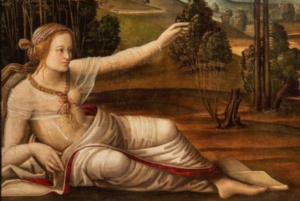The Museo del Prado devotes a lecture to the paintings lent by the CEEH, on view in its galleries

As part of the ‘Domingos en el Prado’ cycle of Sunday lectures held in the Museum’s auditorium, Joan Molina Figueras gave a talk entitled Otra historia de Boccaccio en el Prado: Cimón e Ifigenia de Johannes Hispanus (Another tale from Boccaccio at the Prado: Cymon and Iphigenia by Johannes Hispanus). He analysed the two scenes produced by this unknown painter around 1495 in a rich ideological and aesthetic context common to other Spaniards who trained in Italy and worked with masters such as Perugino, Leonardo da Vinci and Michelangelo, drawing on their tradition and taking it back with them to Spain, where it had a prolific influence on Renaissance art.
The head of the European Painting Collection up to 1500 at the Prado situated Johannes Hispanus at this artistic crossroads and explained the symbolic value of the novella of Cymon and Iphigenia from Boccaccio’s Decameron, which greatly inspired the cycles of narrative paintings of Quattrocento artists. Johannes Hispanus’s pictures demonstrate this enigmatic painter’s familiarity with the ideals of the Neoplatonic circles of Medici Florence, also reflected by Sandro Botticelli in the story of Nastagio degli Onesti, another painted adaptation of the Decameron to a series of panels, some of which are on display in the same room in the Prado where the works loaned by the CEEH are currently on show.
Video of the lecture
A loan from the CEEH at the Museo del Prado
